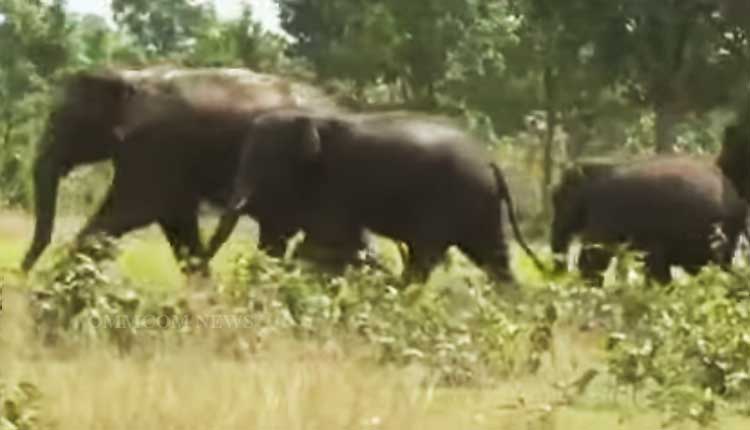Bhubaneswar: Odisha’s elephant population is facing a severe habitat crunch, sparking increased concerns over food shortages, rising man-animal conflicts, and declining animal health, according to a top state official.
Principal Chief Conservator of Forests (Wildlife), Susanta Nanda, revealed that the state currently houses around 2,100 elephants, approximately 400 more than the space required to sustainably accommodate them.
The overcrowding has led to ecological stress, with limited availability of food, water, and living space, which in turn reduces the elephants’ disease resistance and can lead to higher rates of bacterial infections, especially among young calves and juveniles, Nanda said.
A study by the Indian Institute of Science (IIS) in Bengaluru, conducted through its elephant conservation center, estimates that Odisha’s landscape can sustain only around 1,700 elephants under safe conditions.
“Since we have over 2,100 elephants, we are witnessing a surge in man-animal conflicts as elephants encroach on human settlements in search of food and space,” explained Nanda.
To ease the situation, the government is exploring the possibility of relocating some elephants to Similipal sanctuary in Mayurbhanj district, which could provide additional protected habitat for a part of the elephant population. However, Nanda noted that the core population of 2,000 to 2,100 elephants will likely remain across Odisha’s landscapes.
Nanda also announced an upcoming statewide elephant census, scheduled for November 14-15.
This census aims to assess not only the resident elephant population but also transient elephants from neighboring states, such as Jharkhand and Chhattisgarh, which frequently roam into Odisha. The findings will help to better understand and manage Odisha’s elephant conservation challenges.
The rising concerns over habitat capacity underscore the need for immediate conservation efforts to address the habitat imbalance and ensure the well-being of Odisha’s elephant population.















